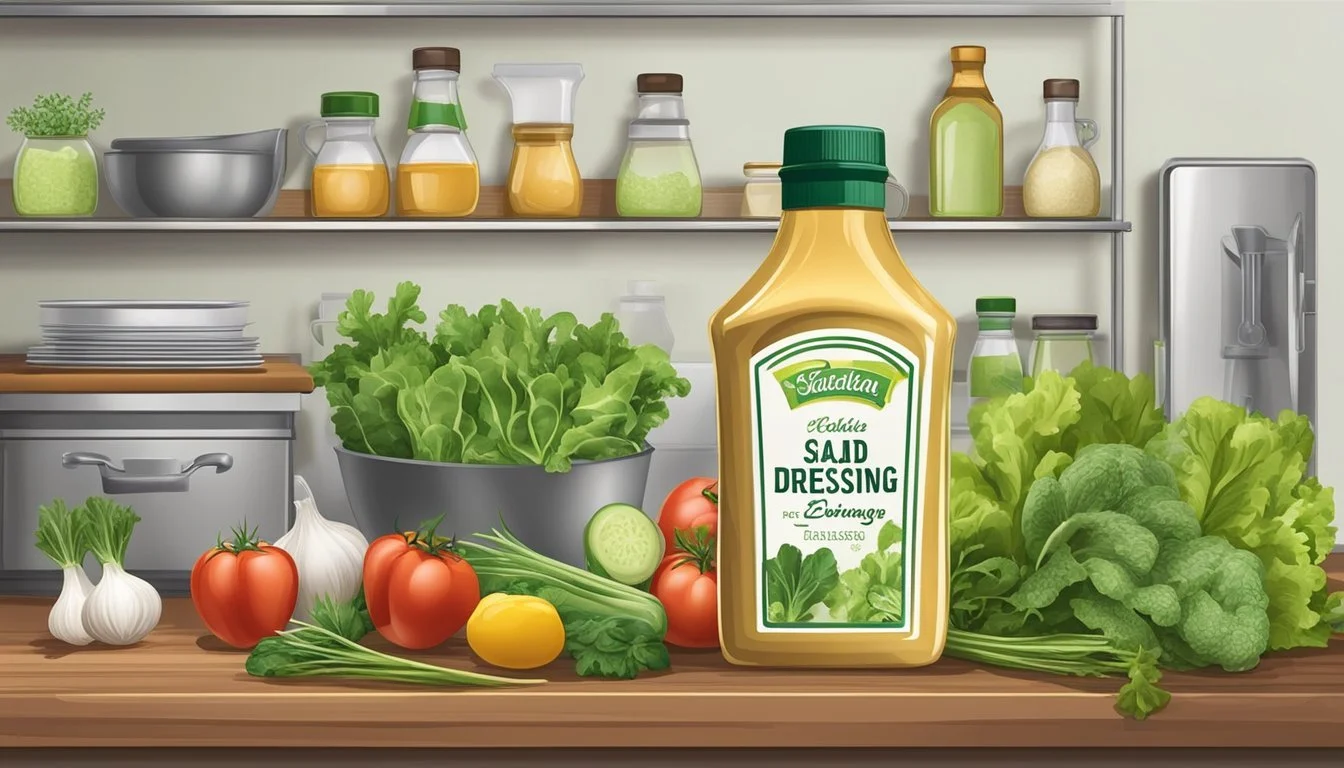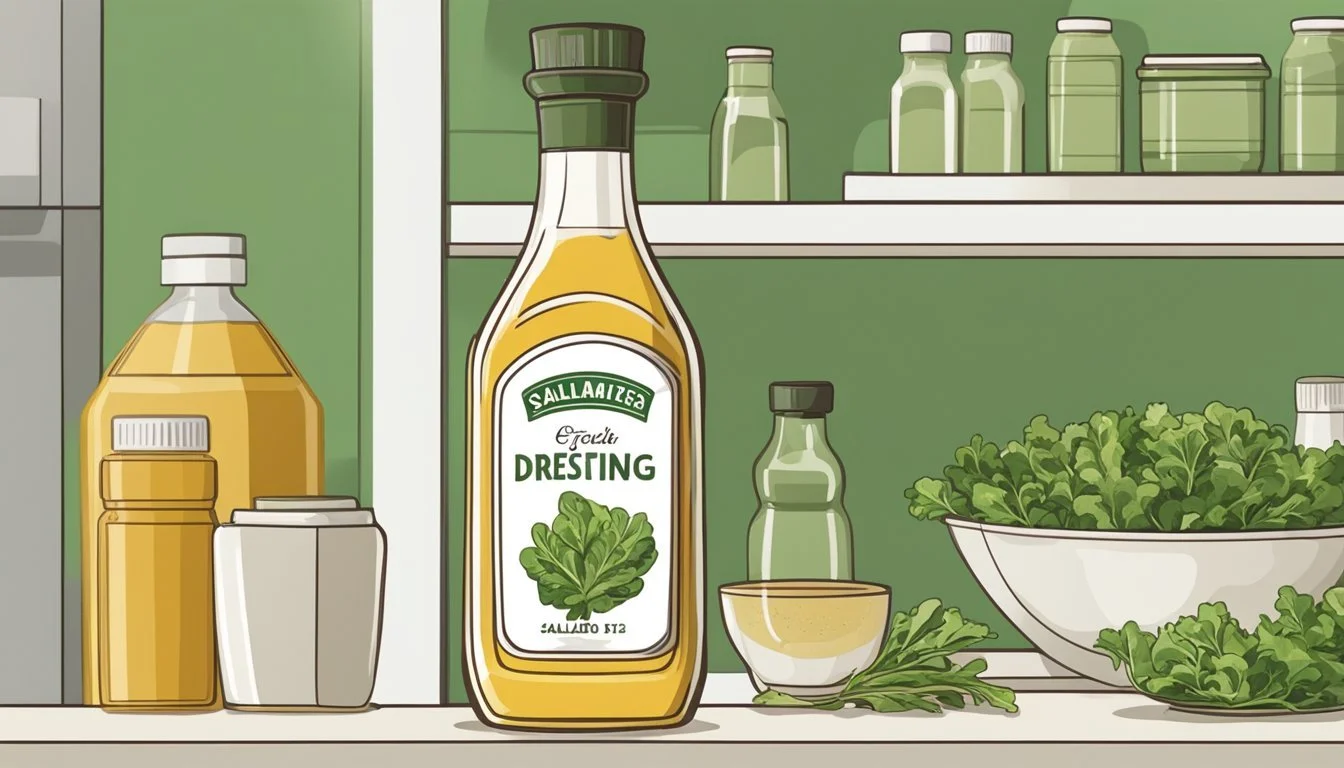How Long Do Fresh Salad Dressings Last?
Understanding Shelf Life and Storage Tips
The shelf life of fresh salad dressings (how long do fresh salad dressings last?) can vary greatly, depending on their ingredients and storage conditions. Dressings made at home generally lack the preservatives found in store-bought varieties and, as a result, typically have a shorter lifespan. Acidic dressings, which may include ingredients like vinegar or citrus juice, often last longer due to their inhospitable environment for bacteria.
Non-acidic dressings containing dairy, mayonnaise, or other perishable ingredients require more careful handling and typically have a shorter refrigerator shelf life. As a general rule, such dressings should be used within a week to ensure safety and quality. It is important for consumers to recognize that freshness impacts not only safety but also the taste and quality of their dressings.
For the safest and highest quality experience with homemade salad dressings, they should generally be consumed within a few days to a week. Refrigeration is essential, and any signs of spoilage, such as an off odor, taste, or appearance, indicate that the dressing should be discarded. Trusting one's senses and erring on the side of caution is key to enjoying homemade dressings at their best.
Understanding Salad Dressing Types
Salad dressings vary greatly in flavor, ingredients, and shelf life. The type of dressing affects how it should be stored and how long it will last.
Oil and Vinegar-Based Dressings
Vinaigrettes, made with oil and vinegar, are the most common oil and vinegar-based dressings. They often incorporate olive oil and balsamic vinegar, although other oils and vinegars can be used. The acidic nature of vinegar helps these dressings last longer than many other types, making them a durable choice for storage.
Creamy and Mayo-Based Dressings
Ranch, Caesar, and other creamy dressings generally consist of mayonnaise, yogurt, or sour cream as a base. The dairy components in these dressings tend to reduce their shelf life, thus they should be consumed within a shorter timeframe, often between 1-2 months when stored properly in the refrigerator.
Citrus and Fruit-Infused Dressings
Dressings that feature citrus like lemon or orange provide a fresh and tangy flavor and are best when consumed shortly after preparation. Their freshness can be compromised over time, even with refrigeration, because of the perishable nature of fresh fruit juices.
Pesto and Herb-Driven Dressings
Pesto is a type of dressing rich in basil and other fresh greens. Herb-driven dressings also rely on fresh ingredients, which can degrade relatively quickly. It's generally recommended to use these types of dressings within a few days to enjoy their full flavor profile.
Specialty and Homemade Dressings
Homemade dressings vary widely depending on the recipe. They lack the preservatives found in store-bought options, so their longevity in the fridge can be quite brief. Acidity and oil content can extend their shelf life, but it is typically best to consume homemade dressings within a week.
Shelf Life Fundamentals
Understanding the principles of shelf life is essential for maintaining the freshness and safety of homemade salad dressings. This section explores the factors affecting the longevity and quality of these dressings.
Common Preservatives and Their Impact
Preservatives play a critical role in extending the shelf life of salad dressings. Vinegar and citrus like lemon juice are natural preservatives due to their high acidity, which inhibits bacterial growth. Homemade dressings lacking these or synthetic preservatives may have a shorter lifespan.
Expiration Date Versus Peak Quality
While expiration dates serve as a guideline for safety, the term "peak quality" refers to the time frame during which the dressing retains its best flavor and texture. Although a product may be consumed after the expiry if it shows no signs of spoilage, its quality may have diminished.
Storage Conditions and Their Effects
Proper storage is vital in preserving the integrity of salad dressings:
A cool, dark place is ideal for unopened dressings.
Refrigeration is necessary once opened, with dairy-based dressings lasting 1-2 months and non-dairy, 3-4 months.
Storing dressings at room temperature significantly decreases their shelf life and can raise the risk of foodborne illness.
Safety and Spoilage Indicators
Indications of spoilage such as an off smell, change in texture, or presence of mold should not be ignored. Dressings exhibiting any spoilage signs should be discarded immediately to prevent the risk of food poisoning.
Factors Influencing Dressing Longevity
Several factors impact how long a dressing will last, including:
Water content: Higher water content can promote bacterial growth.
Oil type: Oils can become rancid over time, affecting the dressing's safety and flavor.
Ingredients like eggs or dairy: These increase the risk of spoilage and reduce shelf life.
Temperature fluctuations and exposure to light can also alter the quality and safety of the dressing.
Specific Shelf Life Guidelines
Shelf life of salad dressings can vary widely depending on their ingredients and whether they are store-bought or homemade. Proper storage and adherence to expiration dates are crucial to maintain quality and safety.
Unopened Bottles
Store-bought Dressing: It can remain shelf-stable, typically lasting between 6-18 months past the printed expiration date when kept in a cool, dark place.
Homemade Dressings: Due to the lack of preservatives, an unopened homemade dressing's shelf life is much shorter, usually up to one week when refrigerated.
Opened Bottles and Homemade Variants
Dairy-Based Dressings (opened): Should be used within 1-2 months.
Vinegar or Citrus-Based Dressings (opened and homemade): Can last up to 2 weeks in the refrigerator.
Opened Bottled Dressing: Once opened, after 2 months quality may decline, and it may become unsafe to consume if there are changes in color, texture, or odor.
Commercial Dry Mixes
Dry Mixes: When kept in a dry and cool place, they can last beyond the printed date, generally up to 12-24 months.
Once water, vinegar, or any other liquid is added to create the dressing, the guidelines for homemade dressings apply.
Optimal Storage Practices
Proper storage techniques are crucial for maintaining the freshness and extending the lifespan of salad dressings. Appropriate conditions vary depending on the type of dressing and whether it contains preservatives.
Refrigerating Dressings
Dairy-Based Dressings: Dairy or mayonnaise-based dressings should be stored in the refrigerator immediately after use. They typically maintain quality for 1-2 months when kept at a consistent, cool temperature. The fridge should be set below 40°F (4°C) to ensure safety and freshness.
Vinaigrettes and Acidic Dressings: Homemade vinaigrettes or dressings with a high acidity can last up to 2 weeks in the fridge. For optimal storage, place them on a shelf rather than the door to avoid temperature fluctuations.
Storing Dressings at Room Temperature
Unopened Commercial Dressings: Dressings with preservatives that are unopened can be stored at room temperature until the expiration date. Ensure they are kept in a cool, dark place away from direct sunlight or heat sources.
After Opening: Once opened, even dressings with preservatives should be refrigerated to prevent spoilage.
Freezing Options
Freezing Homemade Dressings: It is possible to freeze homemade dressings for longer storage. Divide the dressing into small portions using airtight containers or ice cube trays.
Thawing: When ready to use, thaw the frozen dressing in the refrigerator and stir or shake well before serving to recombine any separated ingredients.
Remember, these are general guidelines, and one should always inspect leftovers for any signs of spoilage like an off smell or appearance before usage.
Recognizing Spoilage and Maintaining Freshness
When dealing with fresh salad dressings, it is imperative to be aware of spoilage indicators and best practices to maintain their freshness. Understanding these can prevent foodborne illness and ensure the quality of the dressing remains satisfactory for consumption.
Visual and Olfactory Spoilage Signs
One can often determine if a fresh salad dressing has gone bad by examining color changes or the presence of mold. If the dressing displays a notably different hue from its original color or visible mold appears, it should be discarded. A rancid smell is another reliable sign of spoilage that indicates the growth of unwanted bacteria. Any offensive or unusual odors signify that the dressing is no longer safe to eat.
Taste Alterations
Flavor is a key indicator of a dressing's freshness. A sour or off taste in a dressing that was once flavorful suggests it has spoiled. Even in the absence of visual signs, an unexpected sour taste can point to bacterial growth and food spoilage. It is safer to discard a dressing if there is any doubt about its taste, to avoid food poisoning.
Physical and Chemical Separation
Fresh dressings (how long do fresh dressings last?) often separate due to the emulsification process breaking down over time. While some separation can be normal, especially in natural or homemade dressings, a dressing that will not mix even after shaking may have started to spoil. Look for changes in texture or an inability to emulsify upon stirring, as this can indicate that the dressing's stability has been compromised.
Preventing Bacterial Growth
Maintaining the pH balance and storing dressings in the refrigerator mitigate bacterial development. Food safety is paramount, so always store dressings in airtight containers and keep them at a safe temperature of 40°F (4°C) or below to slow bacterial growth. To maintain quality, dressings should not be left out at room temperature for prolonged periods, where bacteria can rapidly multiply.
Maximizing Usage and Creativity
When it comes to freshly made salad dressings, one can go beyond their typical use. The lifespan of a homemade dressing is not only about how long it can be stored, but also about how creatively it can be utilized in the kitchen.
Salad Dressing in Recipes Beyond Salads
Salad dressings bring a vibrant burst of flavor that can enhance a variety of dishes. Chicken salad, for example, can be transformed with a mustard-based vinaigrette, providing both tanginess and a touch of spice. An avocado dressing, rich and creamy, serves double duty as a delightful dip for crudités or a flavorful spread for sandwiches.
Creating Variations
To maintain the freshness and excitement in one's culinary routine, altering a base dressing recipe is effective. By adding or changing ingredients such as fresh garlic, a hint of vinegar, or different herbs, a standard dressing can evolve into something new and exciting. Each variation should be used within 3-4 days to ensure both food safety and flavor.
Dressings as Marinades
Dressings can act as excellent marinades for proteins or vegetables. Oil-based dressings are particularly good for this purpose due to their ability to adhere to the surface of the food. Marinating chicken in a homemade Caesar dressing overnight will not only tenderize the meat but also provide a nuanced flavor profile. Dressings utilized as marinades should always be fresh to preclude potential food safety issues.







